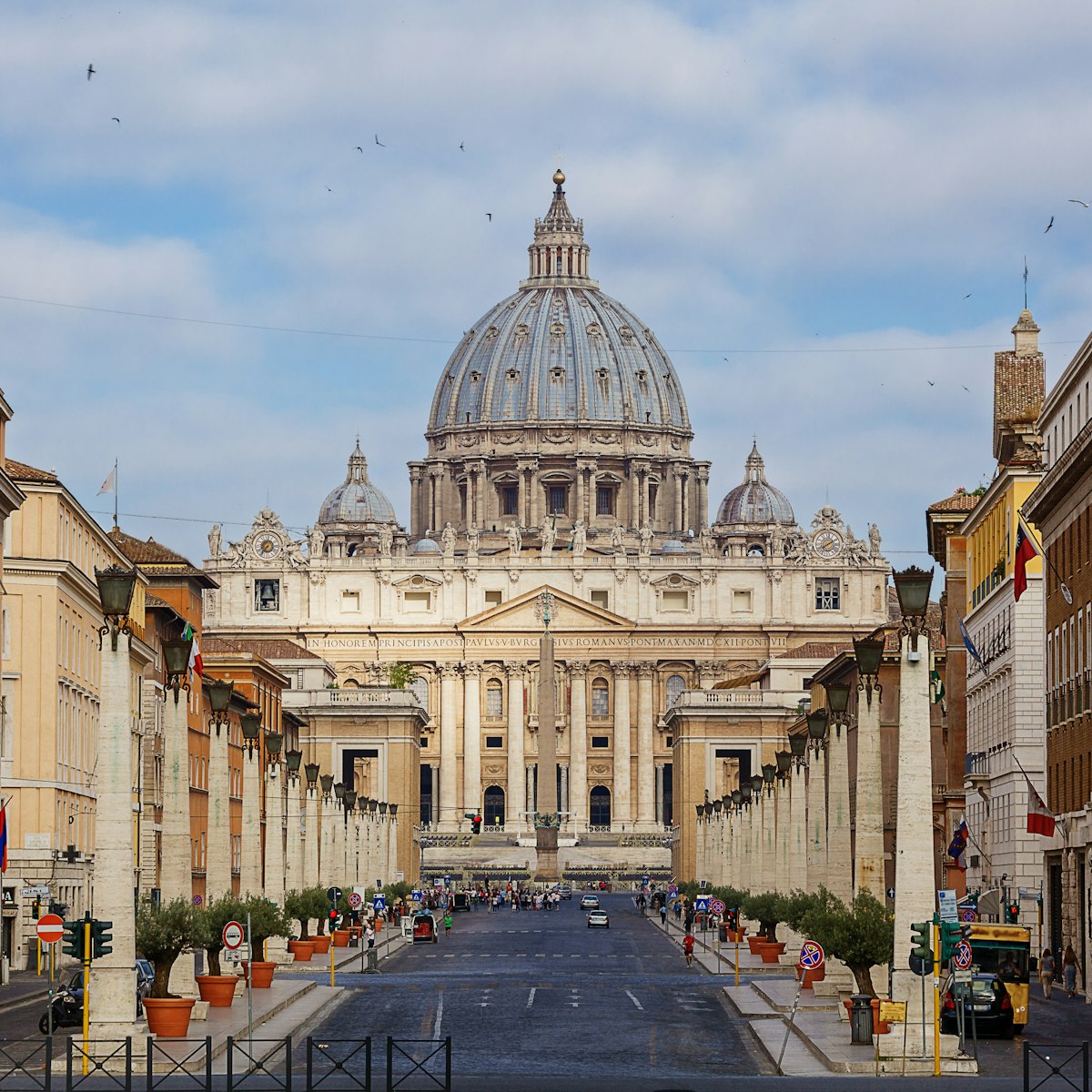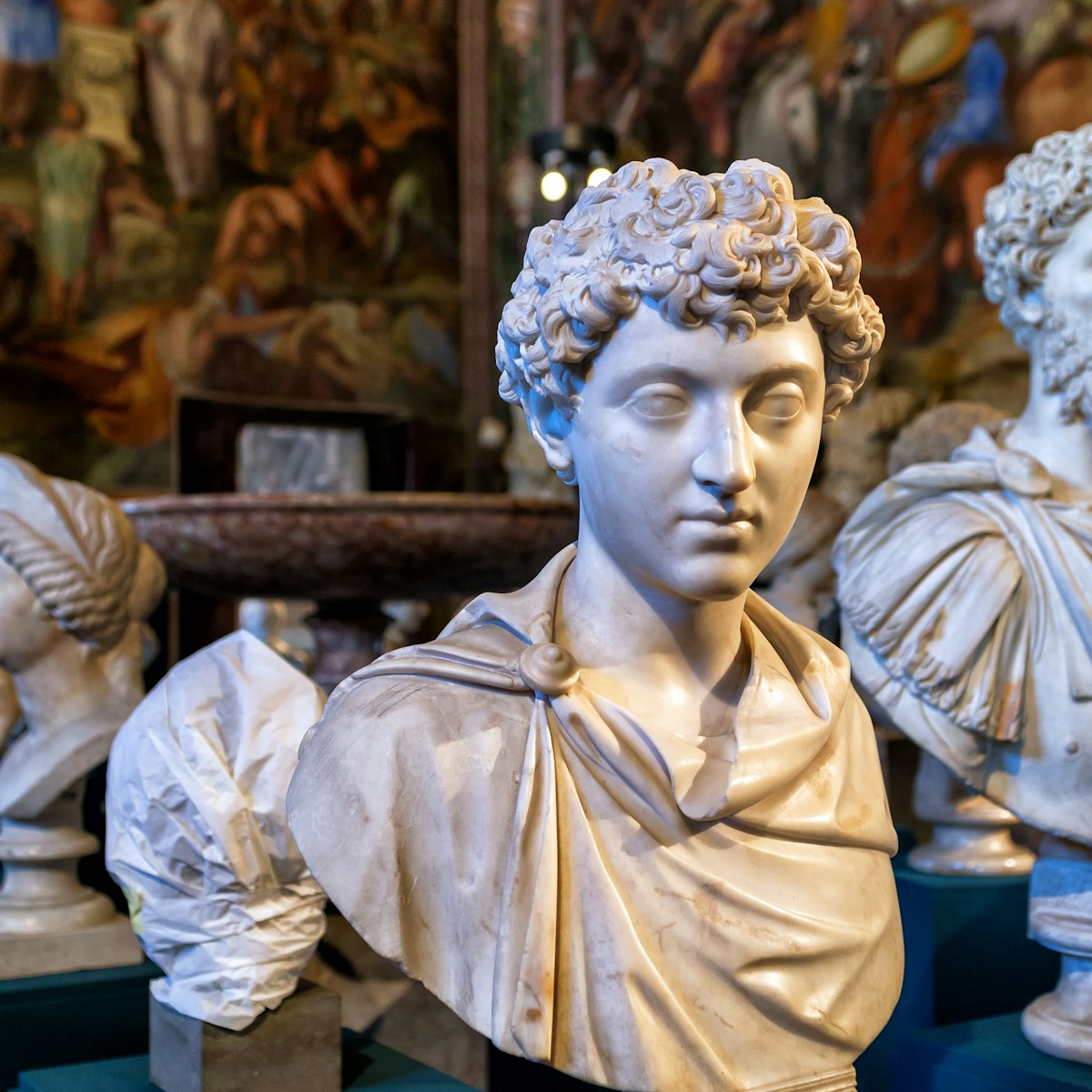Love it or loathe it (as many Romans do), you can't ignore the Vittoriano (aka the Altare della Patria, or Altar of the Fatherland), the colossal mountain of white marble that towers over Piazza Venezia. It was built at the turn of the 20th century to honor Italy's first king, Vittorio Emanuele II – who's immortalized in its vast equestrian statue.
The building provides the dramatic setting for the Tomb of the Unknown Soldier. Also inside is the Complesso del Vittoriano, a gallery that regularly hosts major art exhibitions. But as impressive as any of the art on show are the glorious 360-degree views from the top of the monument. See for yourself by taking the panoramic Roma dal Cielo lift up to the Terrazza delle Quadrighe.
History
In 1878 the Italian government decided to erect a monument to honor King Vittorio Emanuele II of Savoy, the first king of unified Italy who had died on January 9 of the same year. In 1880, the state ran a competition to decide who would be assigned the project. Over 300 international architects applied and the initial winner was the French Henry Paul Nènot, who proposed a triumphal arch to be constructed near Termini station. The choice of Nènot, however, sparked major backlash – other architects didn’t accept that such a patriotic monument would be built by a foreigner – and the government yielded to the pressure and organized a second competition.
Giovanni Sacconi was ultimately assigned the project and construction began in 1885. The monument was officially inaugurated in 1911 for the 50th anniversary of the Unification of Italy, although it would only be completed 1935.
Tips and other practicalities
Entrance to the Vittoriano is free of charge, but you’ll have to buy a €15 ticket to access the panoramic terrace and enjoy the great views over the city. The ticket includes access to the Museo del Risorgimento where you can learn about the historic figures that contributed to the unification of Italy, and to the nearby Palazzo Venezia, a 15th-century papal residence housing an important art and history museum. The ticket is valid for seven days. The panoramic terrace opens every day at 9:30am and closes at 6:30pm from Monday to Thursday and at 7:30pm from Friday to Sunday.









